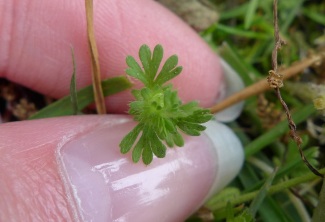This weekend was held the second edition of the Surrey Wildlife Trust’s Bioblitz at Wisley Common Nature Reserve near Woking.
Now, as I can imagine your eyebrows raising – what on earth is a “Bioblitz”???
As I’m lazy, here is Wikipedia’s definition (but it’s actually quite good) : “A BioBlitz is an intense period of biological surveying in an attempt to record all the living species within a designated area. Groups of scientists, naturalists and volunteers conduct an intensive field study over a short, usually 24 hour, time. There is a public component to many BioBlitzes, with the goal of getting the public interested in biodiversity.”
Various sessions were organized, to suit everyone’s interests, agendas, and skills, such as astronomy sessions, moth surveys or mammal tracks surveys, but also other, family-oriented activities like pond dipping or carriage rides.
The walk from the car park to the base camp weaved through the oak woodland, and was very pleasant despite the annoying noise of the nearby A3.
The 1-hour survey started on road verges near the camp, with typical flora of wet grassland : Hard Rush (Juncus inflexus), Bird’s Foot Trefoil (Lotus corniculatus) with a leaf of White Clover (Trifolium repens) at the bottom of the right picture.
Two low-growing, yellow-flowered plants, belonging to very different families : Creeping Buttercup (Ranunculus repens) and Silverweed (Argentina anserina – it was previously in the genus Potentilla but has been renamed by scientists, don’t ask me why…at least the common name ‘Silverweed’ seems very appropriate!) :
We then moved to an acid grassland area, which has a very thick cover or very tiny plants.
Here, Heath Pearlwort (Sagina subulata) and Heath Speedwell (Veronica officinalis) :
Even tinier are the Slender Parsley Piert (Aphanes australis – no relation to Parlsey, although it’s actually edible…but you would need a lot for a salad!) and the Thyme-leaved speedwell (Veronica serpyllifolia).
More acidic-soil specialists with Wood Sage (Teucrium scorodonia – quite unmistakable with its deeply-veined, almost wrinkled leaves) and the Early Hair-grass (Aira praecox).
Extensive management is done at the reserve (cutting large trees, encouraging grazing…) to prevent it from reverting back to woodland. Cleared areas are often overtaken by bracken fern (Pteridium aquilinum)…
Bu they display an interesting flora : Climbing Corydalis (Ceratocapos claviculata – an acidic woodland plant with tendrils) and Sheep’s Sorrel (Rumex acetosella – the smallest sorrel, with distinctive arrow-shaped leaves).
It was a plant survey, yes, but we had the chance to spot some insects : a rather cool male of Nemophora degeerella (Longhorn moth), with its excessively long antennae, and a Wood cricket (Nemobius sylvestris). It is actually a nationally scarce species, but there is a good population in Wisley Common (and I can honestly say I saw dozens crawling on the ground!).
The last step of the walk was a more boggy area, with tall rushes and birch saplings.
Botany experts from the Surrey Wildlife Trust and enthusiasts from around the county, armed with hand lenses and recording papers examining a rush :
As expected in such habitat, we find cross-leaved Heath (Erica tetralix) in flowers, and a lot of sedges and rushes. They can look a bit dull at first sight, but a close-up on the flowers tells a whole different story – how pretty is this Heath rush (Juncus squarrosus)!
I was also very happy to see for the first time the Star Sedge (Carex echinata), certainly distinctive with its yellow-green, star-shaped fruits.
And because botanizing never stops (an obsession?…maybe 🙂 )…these two beauties found on the car park, while changing shoes : the Lesser Stitchwort (Stellaria graminea) and Bird’s Foot (Ornithopus perpusillus – terribly tiny pea-like flowers).
For those who are wondering what the results of the Bioblitz are : the provisional count of species identified is 475! 🙂


























A lovely post Sophie. The bioblitz is definitely the in thing at the moment – lots of great new records.
Thanks Tim 🙂
Yes, I think Bioblitzes are a great way to mix science and public awareness at the same time, because you have a large choice of activities and you can discover things that you might not otherwise consider!
This post is awesome as well as educational and the photos are great . There should be more environmental awareness as we do need to preserve our most precious gifts of nature. Thanks for sharing
Fantastic blog Sophie! Wish I’d had the chance to go out plant spotting but I was busy on mammal tracks and signs. Got my own blog on the way but it won’t be half as pretty as yours!
Very cool project – I wonder how difficult it is to organize something like this here in remote eastern France?